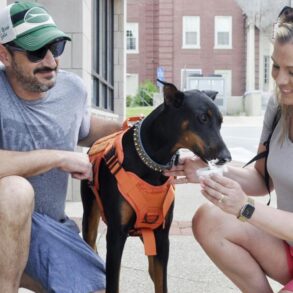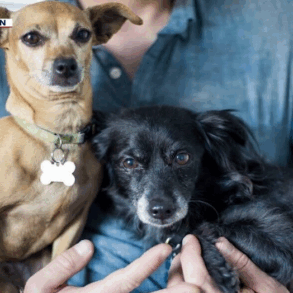Apathy? Inactivity? Isolation? A lack of motivation? It’s certainly possible for a dog to feel low in spirits. Dogs are sentient and emotional beings. Hence, like humans, they also go through emotional crises. Now, while this cannot be compared to human depression — whose breeding ground involves more complex mental processes — these animals also go through complicated moments from a psychological point of view, such as when they’re missing a loved one, or when they have to adjust to a new home after moving.
“Dogs — like most animals that have a complex brain structure, composed of a prefrontal cortex and amygdala — can suffer from psychological disorders similar to those experienced by humans,” explains Félix Zaragoza, a professor of Ethology at the Alfonso X El Sabio University, in the Madrid region. In the case of depression, however, there are differences with respect to humans: “People have greater cognitive complexity; the levels of emotional and socio-affective disturbance are usually more serious and the situation tends to be more long-term,” Zaragoza points out.
But are there factors that can determine whether a dog has a greater or lesser tendency to become depressed? “Various issues influence this, such as the environment, education, genetics, experiences and the animal’s own personality,” the expert replies. “Dogs can become depressed when they’re subjected to high levels of chronic stress, due to situations such as being deprived of the company of their owners, or the loss of a social companion, such as another dog or a cat,” the specialist adds.

Dogs that aren’t in a good emotional state have certain behaviors in common that indicate that they’re going through a psychological slump: “Inactivity, apathy and the inability to feel motivated or pleased to do things that they used to enjoy, such as going for a walk,” the expert lists. “The dog — in this situation — doesn’t seek or expect anything from their environment, such as caresses, food, play, or interaction with other animals that they live with.”
How do you help a dog when they’re unhappy?
Once you detect that an animal isn’t psychologically well, the first step is to rule out physical problems and illnesses. “It’s advisable to go to the vet for a thorough check-up to determine if there’s pain or discomfort caused by any disease, such as osteoarthritis,” the veterinarian warns.
On the other hand, García stresses the importance of the animal having all of its needs met, in order to achieve a good quality of life: “For example, elements such as play, walking, rest, social contact, or the possibility of exploration through smell, which are essential for the animal’s well-being.”
Understanding canine communication is another key issue in knowing how to interpret a dog and its emotional processes. “This helps us understand what the animal really needs, but coherence is also important, because dogs need to know what’s going to happen so that they can feel safe. They’re greatly affected if, in response to an expected action, they’re responded to in a different way,” he warns.
Although each breed varies according to characteristics and personality, whether it’s a German Shepherd or a bulldog doesn’t influence whether there’s a greater or lesser tendency to go through certain emotional processes. “For example, border collies are very active, so if they’re apathetic, they’ll never reach the level of a Saint Bernard — which is a much calmer breed — yet it’ll be more noticeable if they’re in a low mood. Individuality makes all the difference, and it will be the dog’s guardians who will understand their animal better than anyone else. They’ll be able to more accurately distinguish their dog’s emotional and psychological state,” the specialist concludes.
Translated by Avik Jain Chatlani.
Sign up for our weekly newsletter to get more English-language news coverage from EL PAÍS USA Edition
This post was originally published on this site be sure to check out more of their content.












































